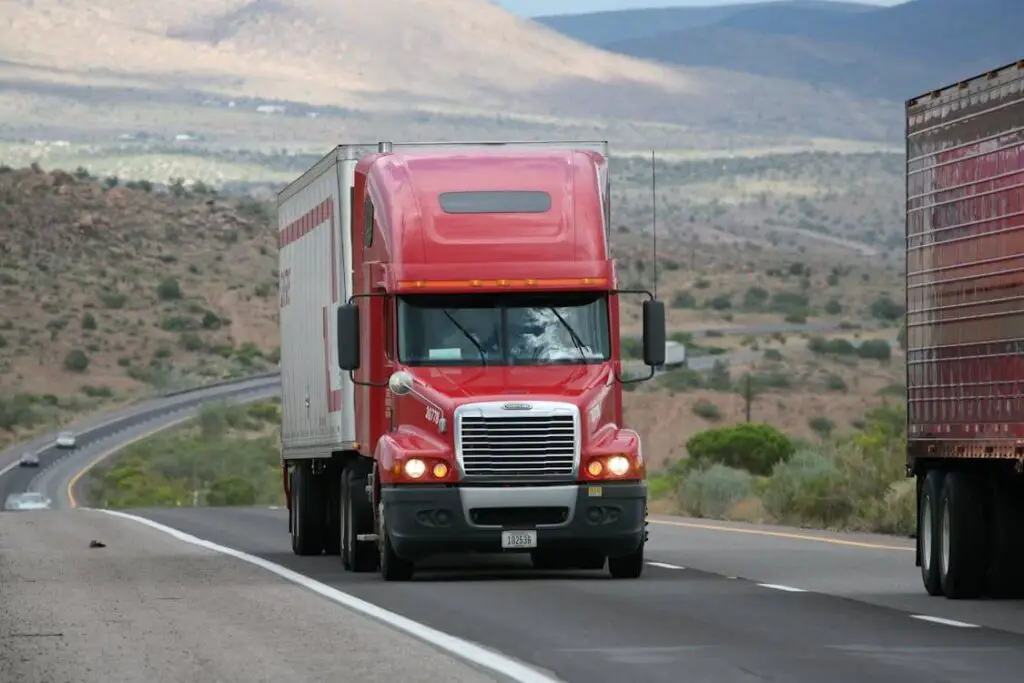The Impact of Technology on Modern Freight and Long-Distance Hauling
The freight and long-distance hauling industries are experiencing rapid technological changes. Autonomous trucks and route optimization software are becoming more common. These innovations promise better efficiency, cost reduction, and safety improvements.
At the same time, the rise in freight demand brings new challenges. How will the industry adapt to rising expectations for speed and reliability? Are current technologies enough to address safety risks? As advancements continue, it’s crucial to assess the potential issues these technologies might create.
Can the industry keep up with evolving demands while ensuring safety and efficiency? This article explores the many technological advancements shaping the future of freight and long-distance hauling.

Paving the Way for the Future With Autonomous Trucks
Autonomous trucks are transforming modern freight hauling with several key advantages:
- They lower operational expenses by decreasing reliance on human drivers.
- Continuous operation without rest breaks improves delivery times.
- Advanced systems help minimize human error, enhancing overall safety.
These self-driving vehicles are among the most exciting advancements in the transportation industry.
Fortune Business Insights notes that the autonomous truck industry saw a valuation of $33 billion in 2023 and is expanding quickly. Analysts forecast the market to reach $76.01 billion by 2032, with a 10% yearly increase.
North America dominated the industry in 2023, holding 45.21% of the total global share. This rapid growth reflects increasing reliance on automation in freight and logistics.
The technology still faces challenges, like regulatory hurdles and safety concerns. Companies are heavily investing in this technology, but these systems must be flawless for public road operations. The future of autonomous trucks relies on overcoming these challenges while ensuring safety and reliability on the road.
How do self-driving trucks communicate with other vehicles?
Autonomous trucks use vehicle-to-vehicle (V2V) communication to share real-time data about speed, position, and road conditions. This reduces accident risks and promotes more efficient traffic movement. Future advancements may allow self-driving trucks to integrate with smart city infrastructure, further enhancing safety and efficiency.
Advanced Route Optimization Software
Route optimization software enhances long-distance hauling efficiency by analyzing real-time data. This technology factors in traffic, weather, and road closures to suggest the best routes for trucks.
Forbes states that route planning helps businesses streamline operations while lowering environmental impact. Several U.S. states have strict emissions regulations that companies must meet to avoid penalties.
Smart route planning helps businesses cut fuel costs and lower carbon footprints. Avoiding regulatory violations saves companies from costly fines and operational disruptions.
Route optimization also allows fleet managers to track progress and monitor driver behavior. The system constantly updates based on real-time data, enhancing route precision and efficiency. With ongoing AI advancements, these technologies will become more intelligent, providing even better solutions for freight logistics.
Will route optimization software integrate with electric trucks?
As electric trucks become more common, route optimization software will factor in charging station locations and battery range. Advanced AI models will predict optimal charging points to prevent delays. This integration ensures that electric trucks operate efficiently and can complete long-distance hauls without unexpected power shortages.
Impact of Telematics on Fleet Management
Telematics is changing fleet management by providing real-time data on vehicle performance. Fleet operators gain insights into fuel usage, driver behavior, and overall efficiency through telematics systems. These systems help reduce maintenance costs, improve driver safety, and extend vehicle lifespans.
They also allow fleet managers to monitor compliance with regulations and ensure drivers take appropriate rest periods. As connected devices grow in number, telematics will remain a key tool in optimizing fleet performance and safety. The technology will continue shaping the future of freight transportation.
Can telematics detect mechanical issues before they cause breakdowns?
Yes, telematics continuously monitors engine performance, transmission health, and brake conditions. Early detection of issues allows maintenance teams to address potential failures before they lead to costly breakdowns. This proactive approach enhances vehicle longevity and minimizes unexpected downtime.
Safety Risks and the Need for Further Improvements
Technological advancements in trucking have improved efficiency and safety, but risks remain. Self-driving trucks are still limited by sensor failures, decision-making challenges, and unpredictable road conditions. More development is needed to address these safety gaps.
Landline Media mentions that driverless trucks are expected to hit the roads in Texas starting in April. This marks a significant milestone in the push for autonomous vehicles in freight transportation. However, the readiness of this technology to safely operate remains a key concern.
As per a recent study, self-driving vehicles are not yet ready for widespread use. Even with technological progress, they still face challenges with erratic road conditions and difficult decision-making. Autonomous truck accidents often result in serious injuries or fatalities, making legal help essential for those involved.
According to TorHoerman Law, experienced truck accident lawyers specialize in handling complex cases and ensuring fair compensation. They understand how to investigate accidents and identify causes like driver negligence or equipment failure. They work to hold the responsible parties accountable and strive for the best outcome.
Hiring a truck accident lawyer is essential for those affected by these collisions.
What happens if an autonomous truck gets into an accident?
Determining liability in autonomous truck accidents is complex. Investigators review data logs to assess whether the AI, manufacturer, or external factors caused the crash. Since regulations are still evolving, accountability remains uncertain, but future laws will likely establish clearer responsibility for self-driving vehicle incidents.
The Role of IoT in Predictive Maintenance
IoT-driven predictive maintenance is reshaping the freight industry. Real-time data analysis helps detect mechanical issues before they disrupt operations.
IBM highlights that IoT sensors and big data technologies are evolving rapidly, driving major advancements in freight logistics. The increasing availability of AI and machine learning is improving predictive maintenance models. More companies are adopting these technologies to reduce downtime and optimize performance.
Sensors in trucks monitor the condition of key components, like engines and tires. The sensors provide instant updates to maintenance teams, helping them spot potential problems early. This forward-thinking maintenance strategy minimizes unexpected breakdowns and cuts overall repair expenses.
IoT-driven predictive maintenance improves vehicle reliability and optimizes fleet operations. As IoT technology advances, it will offer even more accurate predictions, preventing breakdowns and ensuring that fleets stay operational. This shift in maintenance strategy is revolutionizing fleet management.
How secure is the data collected by IoT sensors?
IoT devices generate large volumes of sensitive data, increasing cybersecurity risks in freight operations. Companies use encryption, secure networks, and AI-powered threat detection to safeguard this information. Strong security protocols help prevent breaches, ensuring that critical fleet data remains protected from cyber threats and unauthorized access.
Technology is transforming freight hauling, but safety must remain a top priority. The industry needs strong regulations and constant improvements in autonomous systems to reduce human error. Data-driven optimization brings efficiency but also increases cybersecurity risks that companies must address.
Protecting sensitive information is crucial for the future of automated trucking. Success in long-distance hauling depends on collaboration between tech developers, regulators, and industry leaders. Working together ensures innovation enhances both efficiency and safety. As technology evolves, balancing progress with risk management will shape the future of freight transportation.






